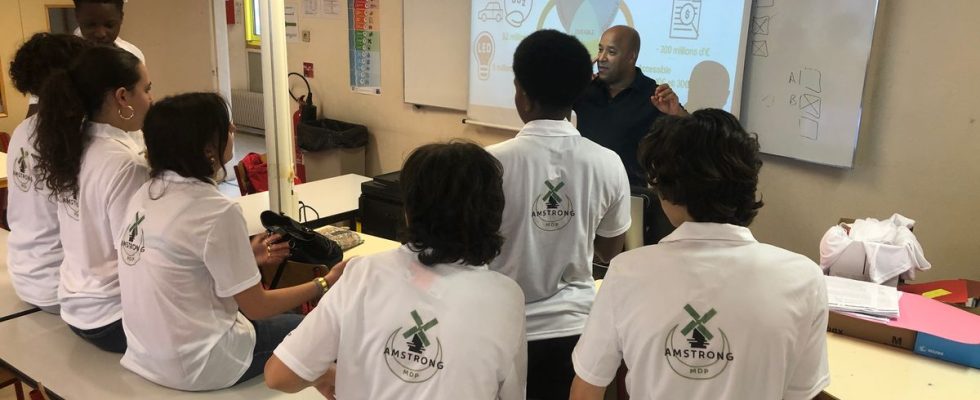“Our system is three-dimensional. Economically, it reduces the French bill by 300 million euros. For the environment, it is a saving in CO2 equivalent to 9.2 million cars, which makes it possible to eliminate telephone chargers which have a phantom consumption equivalent to 5 billion 10-watt LED bulbs. Finally, our system, which will cost between 10 and 30 euros, will be accessible to all… It is livable, fair, and viable”.
By reading these words, one could imagine that it is about a representative of a multinational, come to praise its product with the giants of this world. But in front of us, pronouncing this very attractive speech which she delivers on the other hand at the speed of a machine gun, stands Inès, 14, in 3rd grade at the Moulin des Près college in Paris. His class participates in the competition Solve for Tomorrow 2023, organized with 1,089 students by the association federation Entreprendre Pour Learn and one of the leaders in electronics, Samsung. And no question of unemployment for Inès and her comrades, because their project has been selected for the final which is held the next day, Wednesday, May 24. Three axes were given this year to high schools and colleges, around social inclusion, energy consumption and recycling.
Brainstorming
“I want people on laser cutting. The others I want you to go to the PCs and we redo the simulation with the ring, ”says technology professor Lahcene Lahmiani, like an orchestra conductor. Immediately, the teenagers in jogging or jeans sneakers go to their posts and turn on the screens, or grab tools.
29 students worked for months on the “Amstrong” project, a system that transforms the energy produced by body movements into current capable of recharging small mobile devices, via a small box. “The smartphone is the device that speaks to them the most. Manon initially proposed to create shoes to create current to charge a phone, we brainstormed and put all the ideas together, and that’s where this idea was born,” explains the teacher.
electromagnetic induction
The pupils used to arrive at this result the method of design-thinking, a usage-based innovation process, thanks to a mentor from Samsung who helped them along this path. “They interviewed family, relatives, or smartphone customers and found that people charge their phones to 100% so they can use it all day, but people have a bad habit of letting it charge all day. at night”… which consumes a lot of energy, explains the professor.
Zakaria, 14, takes over for the technical explanations, with remarkable ease. He is part of the group that must go and defend the project orally before the jury chaired by Jacques Attali, this man-orchestra who is at the same time a thinker, musician, business manager, policy adviser and also president of Positive Planet, a NGO that fights against precariousness through entrepreneurship. “It is based on the phenomenon of electromagnetic induction: it is a variation of the flux of the magnetic field in a coil of copper wire. To vary this field, it will have to be brought closer and then moved away from the coil, that creates a variation and therefore current”, explains Zakaria, who shows the object still in the form of a prototype.
A logo, t-shirts
It’s impossible to say how much energy “Amstrong” can generate, and if he will actually be able to maintain a laptop battery in the state with only the movements of a human throughout the day. But the teacher wants to be optimistic, he hopes that the idea of his class will allow humanity to do without a charger. The students, they and they, have invested themselves thoroughly, at the rate of an hour and a half per week on technology courses and many overtime hours in the last weeks. They even invented a logo, printed on T-shirts that will be worn by the class on the day of the final.
“In 3e in technology, the guideline is the project approach, and with this external competition, it was an opportunity to give even more meaning to my course”, explains Lahcene Lahmiani. Especially since the projects that catch Samsung’s eye then have a chance of being supported to the end. Answer this Wednesday, around 5 p.m.

